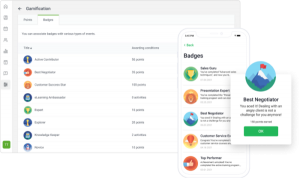Brands, agencies and publishers approach the rapidly evolving videogame ecosystem.
As the IAB rolls out new ad standards for gaming, marketers at brands and agencies are preparing for the future of in-game ads. That’s because more consumers than ever identify as gamers (up to three billion globally), and with new technology and gaming experiences, they’re more reachable by brands.
One sign of how the landscape is changing, adtech companies like Anzu are partnering with publishers to provide dynamic ad placements in-game. This allows brands who don’t have a comprehensive gaming strategy to test and learn, and also to incorporate gaming into a broader omnichannel media strategy.
But the sheer size of the gaming audience — over 200 million gamers in the US alone — means marketers who get more involved can produce greater returns by tapping into this engaged population.
Lead with brand strategy. Partnerships between game publishers and adtech companies are making it easier for brands to find their audiences in-game. Brands don’t have to speculate as much about if their customers are playing specific games. And if a brand’s customers are already playing the game, marketers should dive in, too.
“We don’t necessarily have a gaming strategy,” said Paul Mascali, head of games and esports for PepsiCo. “We have a brand strategy that gaming can help. We do this by leveraging data with third parties or internal data to reach those consumers who are consuming the content.”
Understanding the community. Also, brands should be consistent and show that they’re invested in the gaming community, Mascali said.
That’s because the gaming community — or, more specifically, the communities built around specific games — are multi-faceted.
For instance, gamers aren’t just plugged into the gameplay. They soak in the culture around the games on streaming platforms like Twitch. But just because videogame fans are passively watching another expert player on a streaming video doesn’t mean they’re not engaged and listening attentively.
“Twitch streamers are a great example of modern day gamers,” said Sarah Ioos, head of sales for the Americas at Twitch. “Non-gaming content has erupted — it doubled during the pandemic in year one. Gamers are not a monolith, they’re multifaceted. We see Twitch streamers bringing more of their whole self into their streaming.”
More lifestyle categories. As PepsiCo has demonstrated, there is a natural crossover between gaming and sports, which leads to traditional sports categories like beverages and snacks. (Also, shoes and apparel.)
During the pandemic, when everybody, including gamers, were shut in, gaming content expanded. Gamers were sharing more about their lifestyles, including exercise routines, cooking, fashion and other interests.
This holistic perspective on gamers opens up more opportunities for brands that want to connect with Gen Z and Millennial consumers.
Many touchpoints. Another interesting aspect about Twitch is that desktop is still the preferred device for their audience, according to Ioos.
Consumers are engaging with gaming content on many different devices and in different contexts, and this allows marketers to finetune their mix. If hardcore gamers and Twitch watchers are on desktops at the home, other more leisure gamers might be playing on mobile while commuting or shopping.
Why we care. All of this means that the strategy has flipped for marketers. Instead of finding a subset of gamers within their audience, they can now look across the billions of gamers and find their audience and subsegments.
Addressability for in-game advertising is still in the early stages, but now there are more opportunities, according to Keith Soljacich, head of innovation at agency Publicis Media.
“More data means more actionable places to find our audiences,” said Soljacich. “[Publishers and tech partners] are building that intelligence for audiences at the same time that opportunities are becoming available to us as marketers.”
The post How marketers are preparing for the future of in-game ads appeared first on MarTech.
MarTech(27)
Report Post







